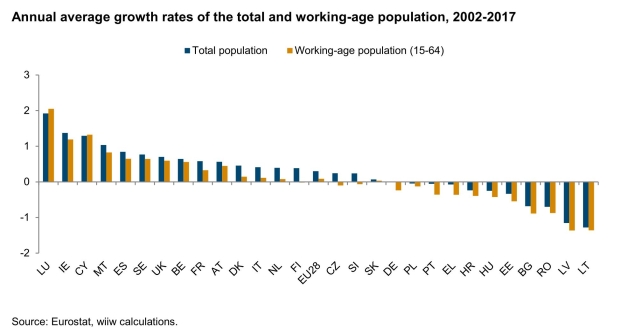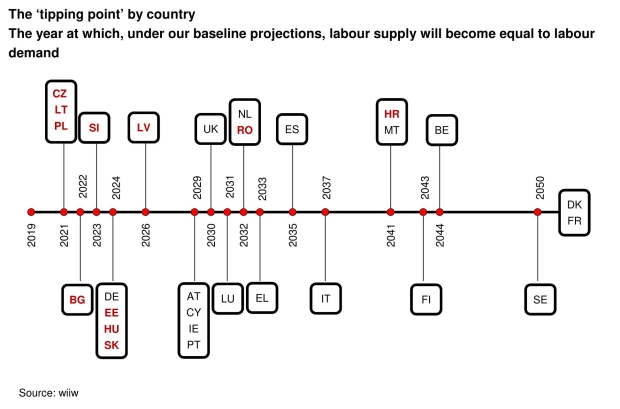EU faces a tough demographic reckoning
12 June 2019
By 2030, labour demand will equal labour supply in most of the EU, creating significant challenges for policy-makers and firms. These are the conclusions of a recent study by wiiw.
By Robert Stehrer, Sandra Leitner and Richard Grieveson
Photo: iStock.com/smartstock
- The ‘tipping point’ at which labour demand will become equal to labour supply in the EU – that is, when labour will become a constraint on economic growth – is now imminent. If current trends continue, most EU countries will hit this ‘tipping point’ during the next decade, many by 2025. Vacancy rates and surveys of employers find that firms in some sectors are already facing severe labour constraints on production.
- Most of CEE will be hit first, not least because they are still losing so many workers to Western Europe. For Western Europe, however, the situation will also become difficult soon, especially for Germany.
- This is an enormous challenge for policy-makers, and will become even more so in the future. Policy options to counter demographic trends can be split into four main areas: higher productivity, immigration, activity rates, or fertility. However, none is a silver bullet. Even if all of these policies are pursued successfully and in combination, they are unlikely to fundamentally alter the picture.
- The implications of this demographic decline do not have to be all negative. Combined with intelligent upgrading of infrastructure and investment in productivity-enhancing improvements in industry, there is no reason that these population trends cannot go hand-in-hand with increases in per capita GDP and living standards. Much can be learned from Japan in this regard.
- In the future, politics in the EU is likely to be increasingly defined by generational questions, and potentially inter-generational conflict. Policy discussions are likely to centre ever more on immigration, how to fund old-age and child care, how to extend working lives, automation, and the problematic issue of financial incentives to increase fertility rates.


